Some bones to pick on a Westside subway dig
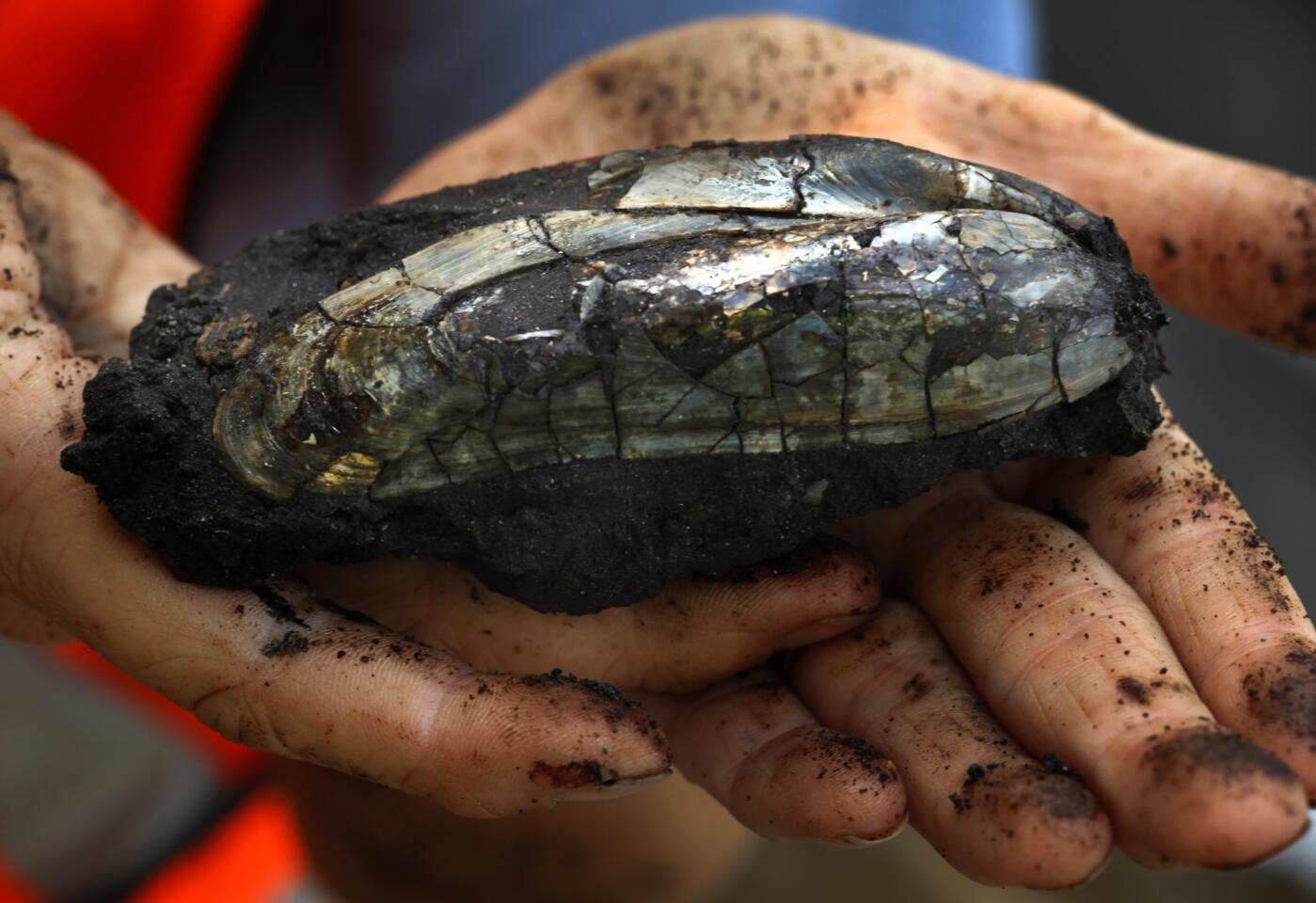
Paleontologist Kim Scott, field and laboratory director with Orange-based Cogstone Resource Management, holds a fossilized mussel shell unearthed in the exploratory shaft underneath Wilshire Boulevard. (Mark Boster / Los Angeles Times)
Major construction on the highly anticipated Westside subway extension won’t begin until next year, but an exploratory shaft dug underneath Wilshire Boulevard to assess soil conditions for future stations and tunnels has burped up a bonanza of fossils and other prehistoric swag.
See full story
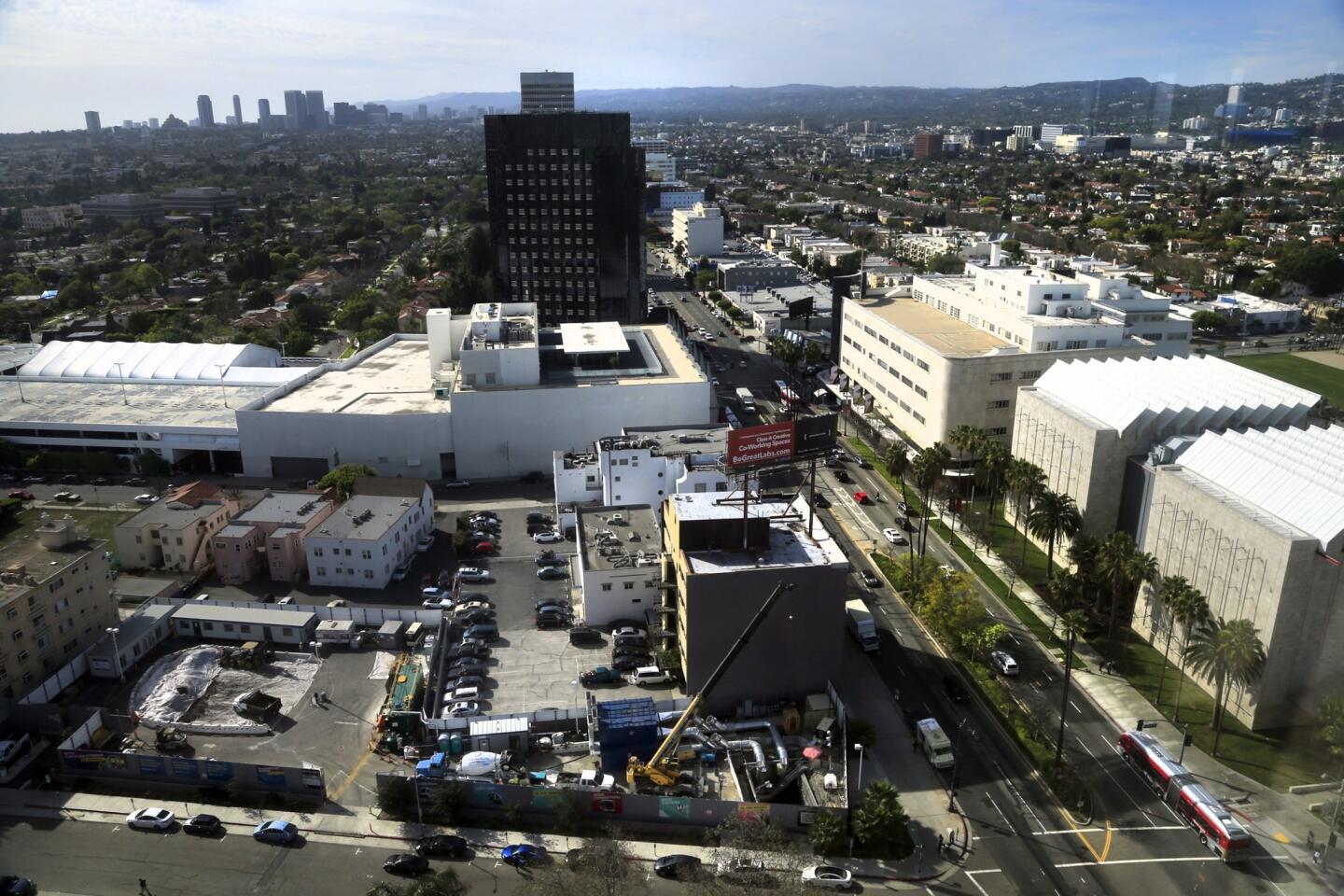
The shaft is at the corner of Wilshire and Ogden Drive, near the La Brea Tar Pits. Over the millenniums, petroleum from once massive underground oil fields oozed to the surface, forming bogs that trapped and killed unwary animals and then preserved their skeletons. (Mark Boster /Los Angeles Times)
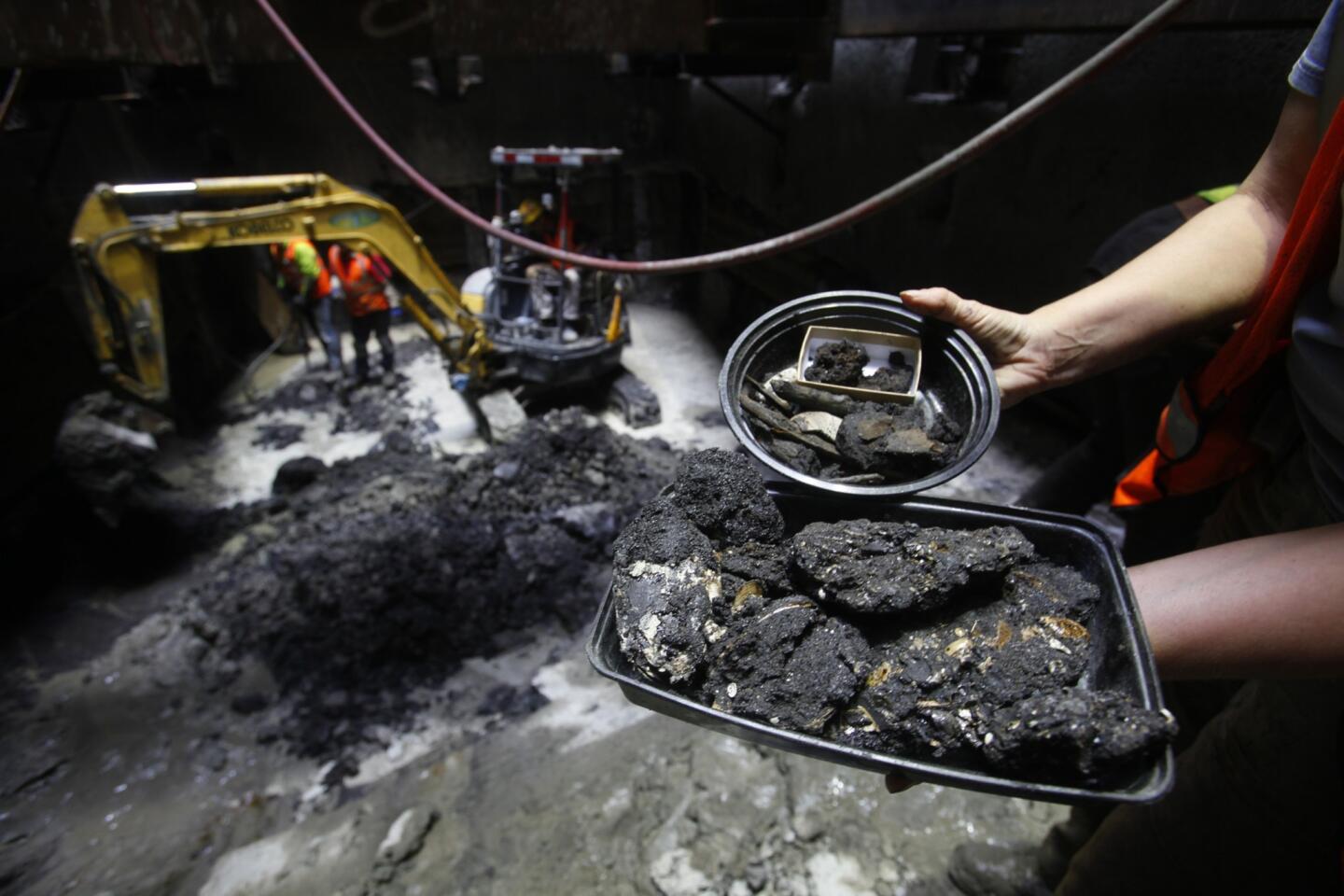
Paleontologist Kim Scott holds some of the fossils unearthed in the excavation. “Here on the Miracle Mile is where the best record of life from the last great ice age in the world is found,” she said. (Mark Boster / Los Angeles Times)
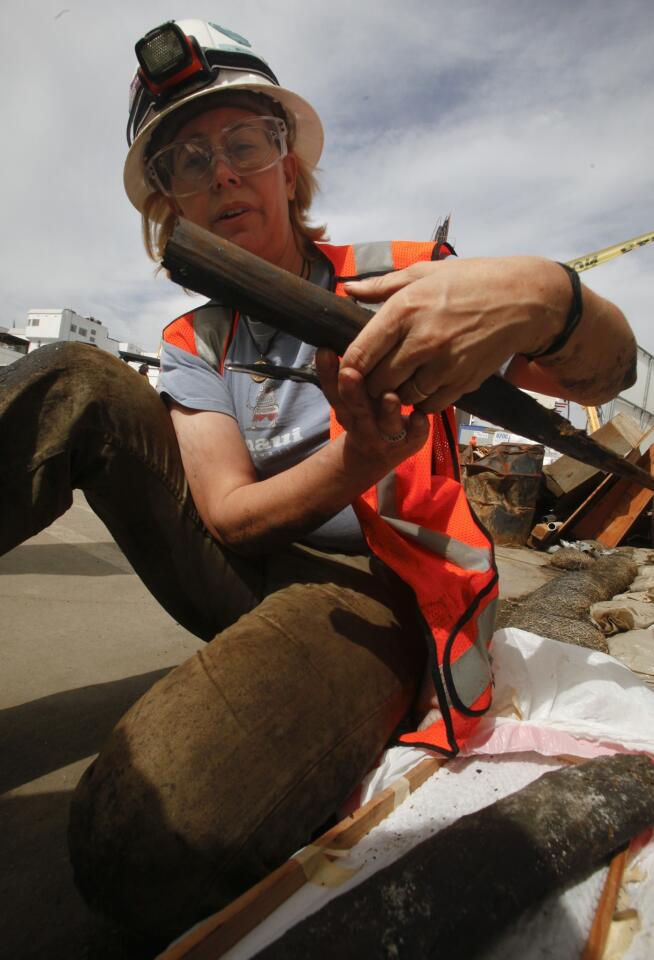
Kim Scott holds an ancient digger pine branch unearthed by a fellow paleontologist. The swimming-pool-size shaft is yielding evidence of a cooler, wetter Pleistocene climate of 100,000 to 330,000 years ago, when Pacific Ocean waves lapped over what is now the bustling Miracle Mile. (Mark Boster / Los Angeles Times)
Advertisement
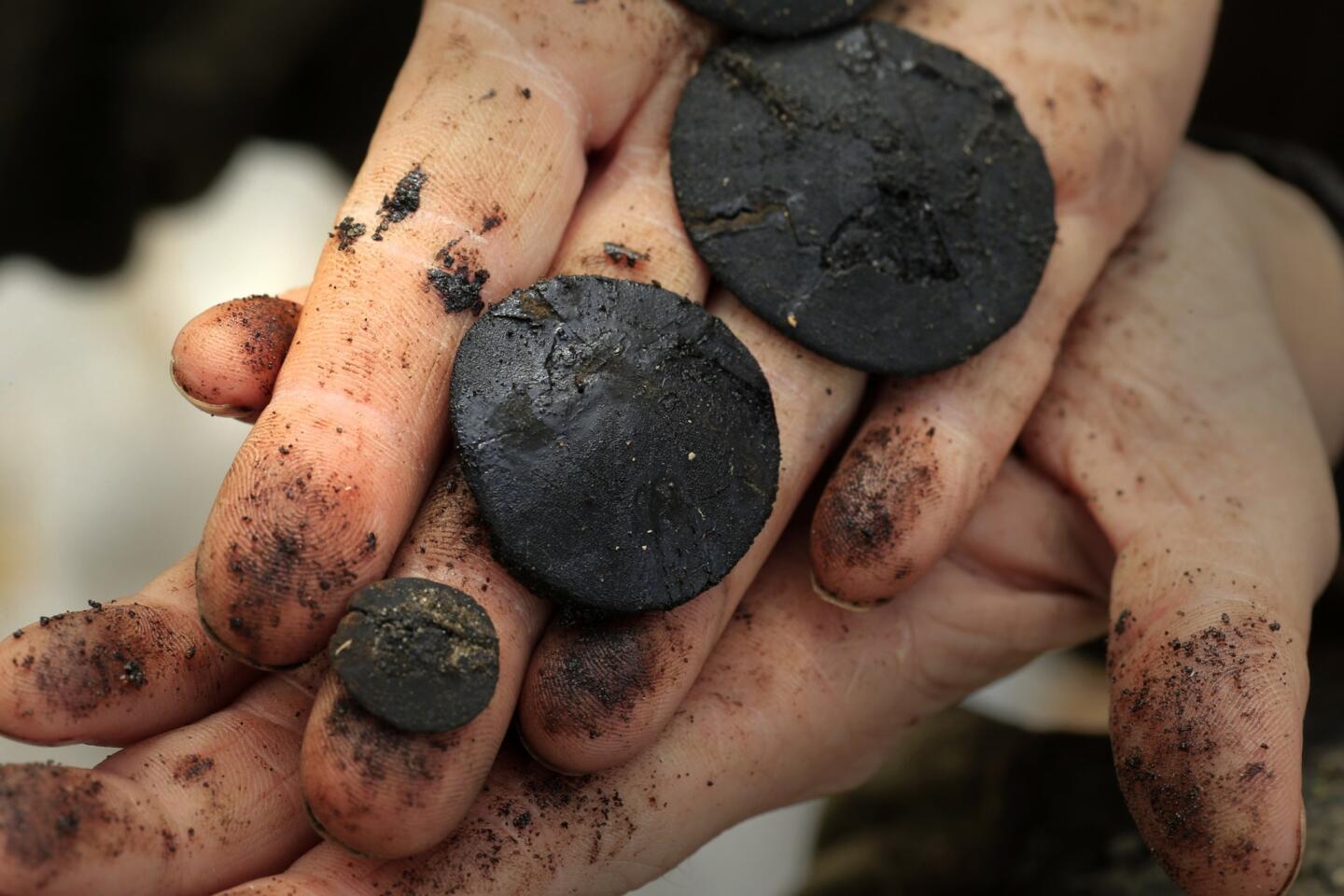
Kim Scott holds ancient sand dollars found at the site. Her fellow paleontologists have also recovered mollusks, pieces of driftwood, Monterey cypress cones -- and what appears to be part of a sea lion’s mouth (perhaps 2 million years old). (Mark Boster / Los Angeles Times)
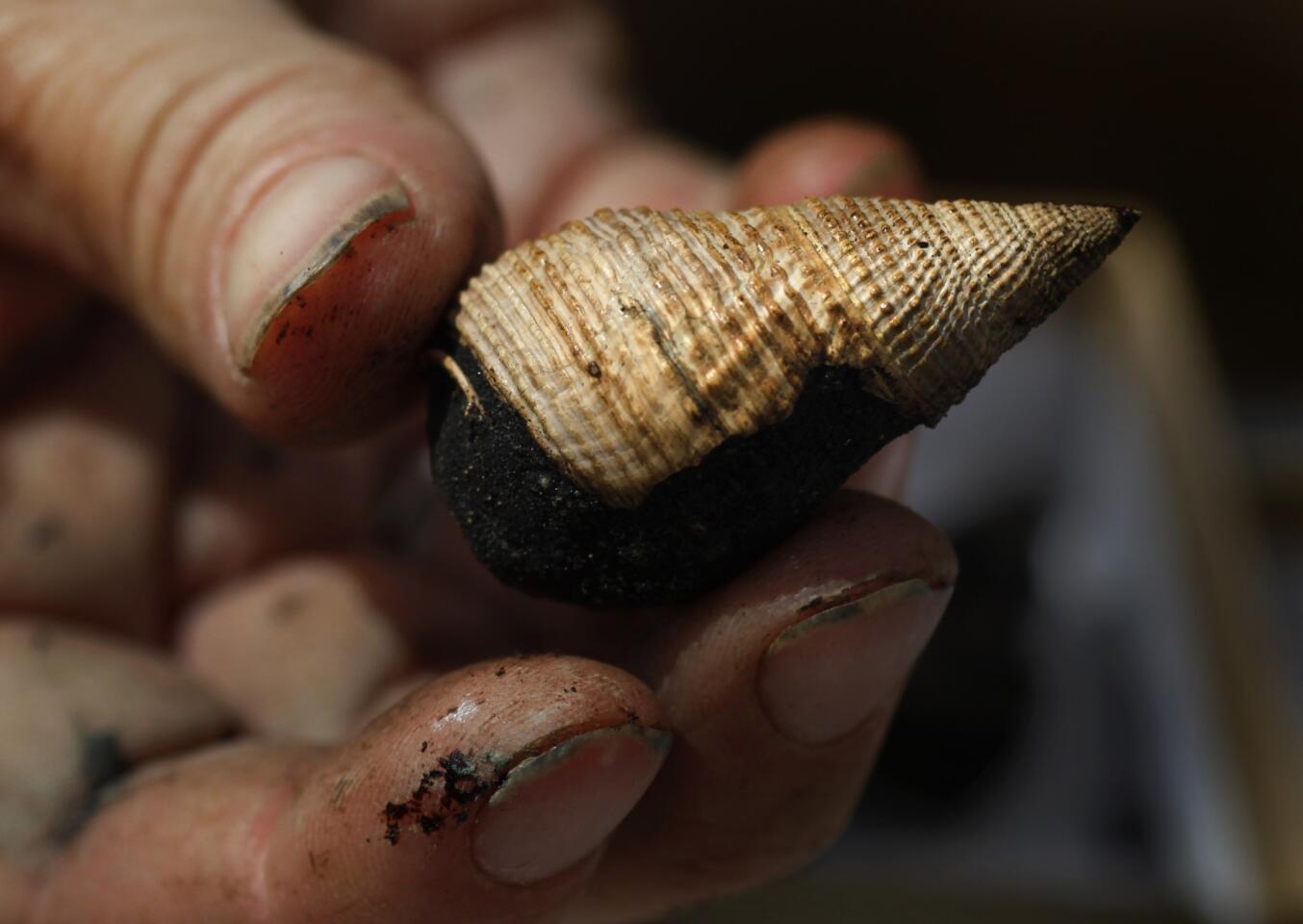
Kim Scott holds an ancient sea shell. In this shaft, she said, “you’re walking along an ice age shoreline.” (Mark Boster / Los Angeles Times)
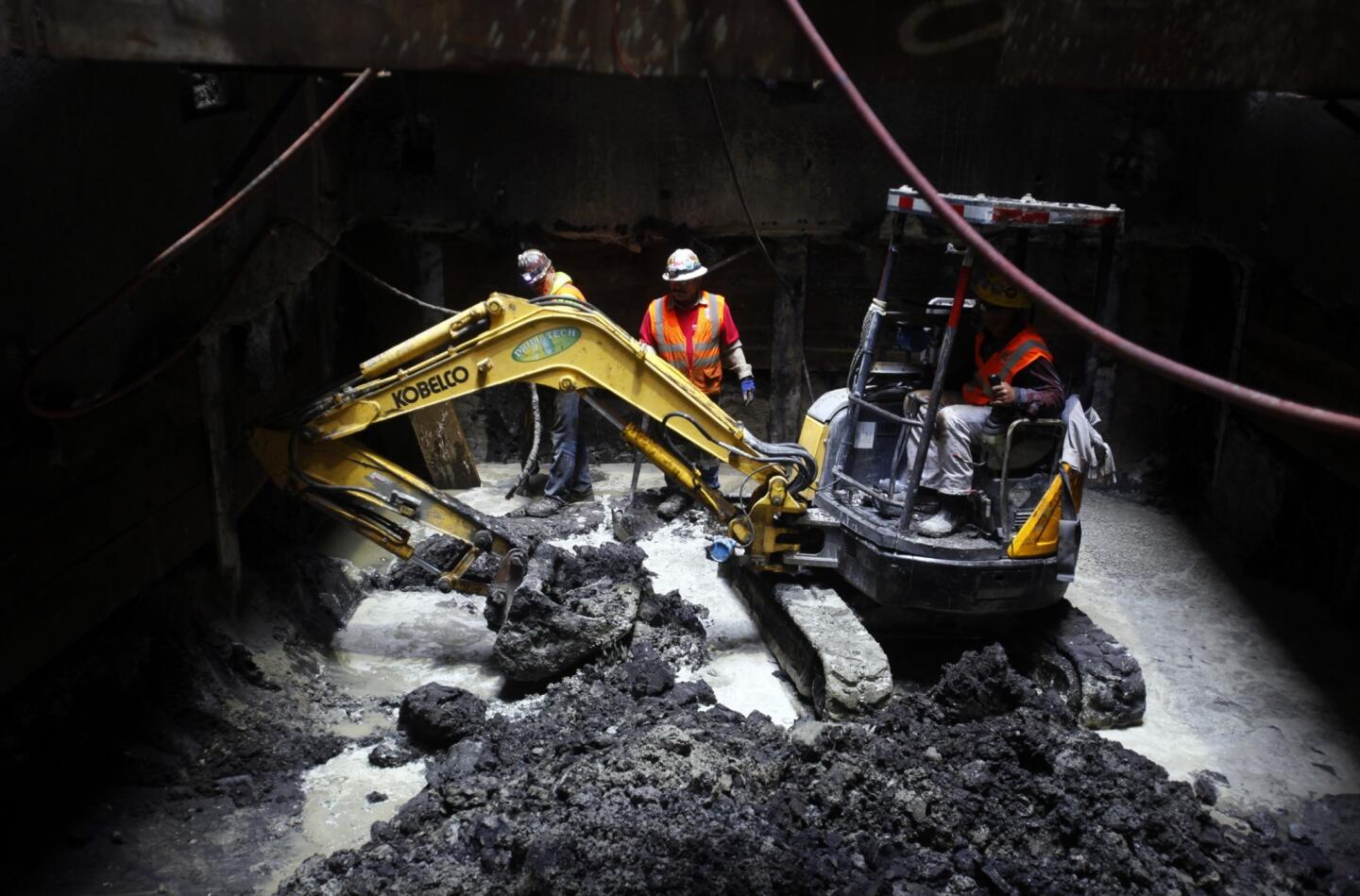
Construction crews continue to dig the exploratory shaft below Wilshire Boulevard. The Los Angeles County Metropolitan Transportation Authority is working with Cogstone and Page Museum researchers to identify and preserve items found in the dig. (Mark Boster / Los Angeles Times)
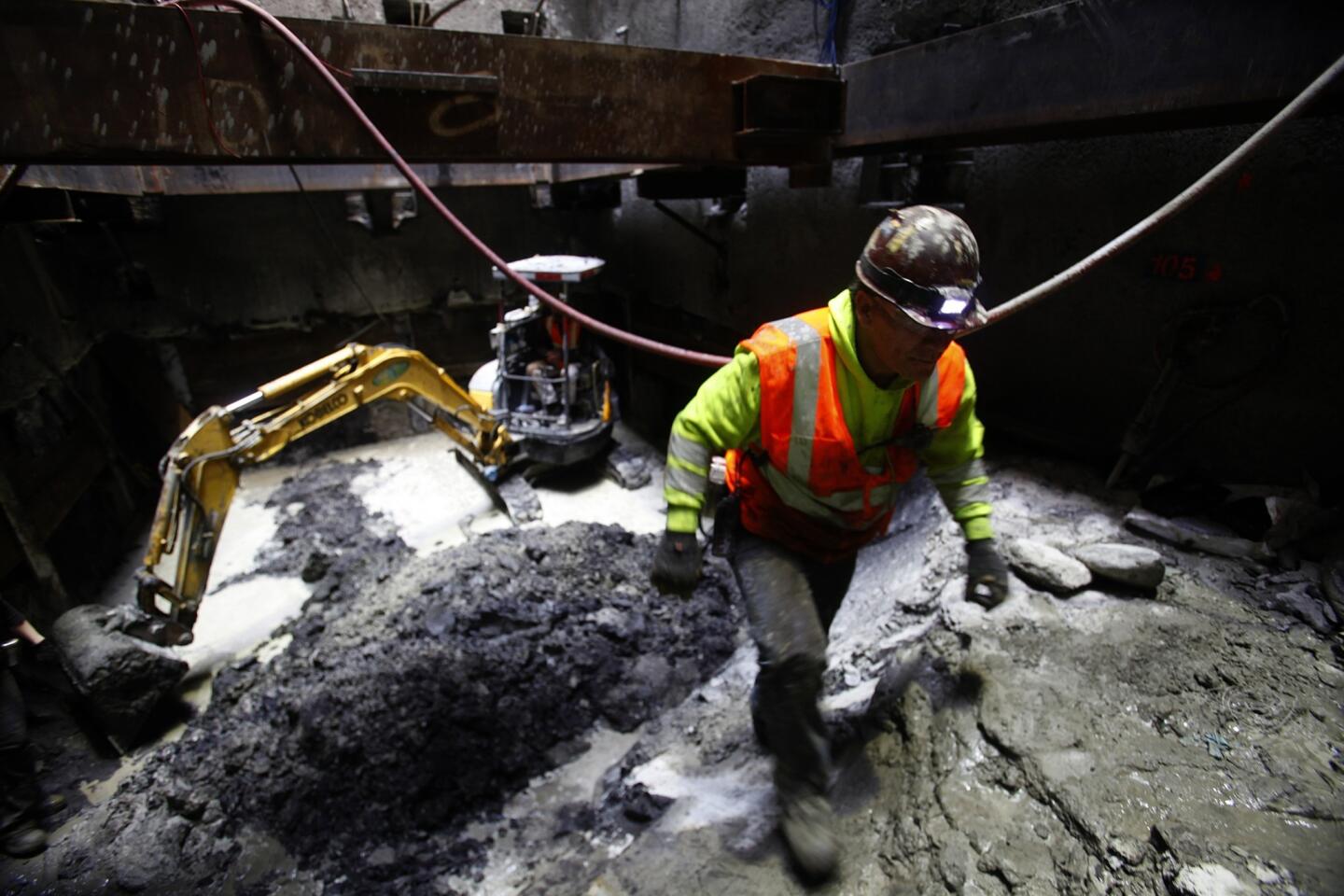
A construction worker walks through ancient debris while his fellow crew members continue digging. At this stage in the exploratory shaft, which will be twice as deep as any other previous excavation in the area, the marine finds are quite portable -- geoducks, clams, snails, mussels, tusk shells. (Mark Boster / Los Angeles Times)







